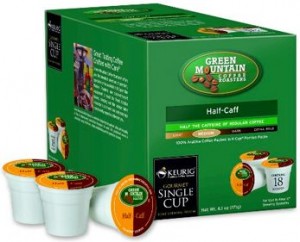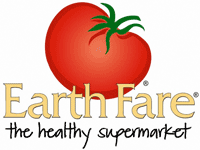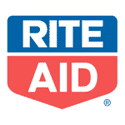New customers to Snapfish can get a FREE Custom Photo Mug! Also, you can get (99) 4X6 prints for 1¢ each when you use coupon code BDAYUSA thru 7/7.
You will have to pay shipping for both the mug and prints, which comes to about $5.99. This is still a great deal though, with each print being around 6¢ ea.!
Also, you can get (2) photo books for FREE when you buy a photo book. Use coupon code BDAYBOOKS thru 7/10! Not only will you get (3) photo books for $8 ea., but also the photo books can have different pictures and don’t have to be the same!
See more photo deals.
 There is currently a great Zulily Fourth of July Blowout sale! The sale includes clothing, decor, accessories, and more.
There is currently a great Zulily Fourth of July Blowout sale! The sale includes clothing, decor, accessories, and more.
There are a ton of great deals!
Deal Ideas:
Girls Plaid Romper, $6.99 (reg. $24)
Black Rose Sandal, $9.50 (reg. $40)
Splash Bomb Launcher Set, $5.49 (reg. $13)
Segolene Paris Black Zipper Tote, $35.99 (reg. $149)
Shipping is $5.95, but you will get free shipping on additional orders you place the same day. The sale ends 7/7.
See more online shopping deals.

Here are today’s top printable coupons! The Green Mountain Coffee coupon is back again if you missed it last time!
Grocery
.55/2 Boston Market home style bowls (zip 12345) printable
$1 off Farm Rich snacks, 18 oz+ printable
$1 off Green Mountain coffee k-cup pks. printable
B1G1 Peanut Butter & Co. peanut butter jar, 16 oz (Facebook) printable
$1 off Talenti product printable
$2/$10 Weight Watchers products printable
Personal Care
$1 off Phillips’ laxative printable
$2 off Poise hourglass pads printable
$3 off TruBiotics product printable
$4 off Zegerid OTC, 42 ct. printable
Search the Coupon Database for more great savings!
Today, 7/4, only you can get a FREE York Photo photo magnet! Use the code FREEMAGNET to get the deal.
The magnet has a value of $3.99, so this is a great deal! The offer is valid for new customers only.
The code is valid today, 7/4, only.
See more photo deals.

Here are the Earth Fare Unadvertised Deals starting 7/3. There are some great discontinued items and coupon matches!
You can see the full ad here.
Produce
- Organic Green Onions, 99¢ ea.
- Organic Seedless Watermelon, $5.99 ea.
- Cantaloupe, $2.50 ea.
- Organic Yellow Squash, $2.29 lb
- Organic Mangoes, $1.50 ea.
- Organic Black Plums, $2.49 lb
- On-Vine Tomatoes, $2.49 lb
- Orgnaic Corn, $1 ea.
- Organic Peaches, $2.49 lb Read More→
 The following is part of an Organic Journey Guest Post Series written by Amy, a long time helper behind the scenes of Southern Savers.
The following is part of an Organic Journey Guest Post Series written by Amy, a long time helper behind the scenes of Southern Savers.
Grab your loofah; it’s soap week! I used to love shopping at the bath product store. (I say “used to” because I stopped a couple years ago. Not so much out of health concerns, but because I got a little freaked out by how many huge bottles of plastic I was throwing away. We switched to good ol’ bar soap.) Today, I’m taking a closer look at the ingredients of soaps and shower gels…
What is soap?
In its most basic form, soap is some kind of fat mixed with some kind of alkali. A Babylonian clay tablet dating back to 2200 B.C. actually contains a recipe for soap: water, alkali (likely ashes), and cassia oil. A basic soap recipe today involves lye, water, and oil. Pretty similar. When you use soap, it emulsifies dirt and oils, washing them away when you rinse.
Of course, if you read the label on the back of your shower gel, I bet you will find a LOT more ingredients. Those extra chemicals are usually added for many different, well-meaning reasons. They affect the look of the product, the texture, the smell, how much lather it makes, how clean it rinses, the shelf life, etc. Millions of dollars are spent in research and development to create soaps and shower gels that people will want to buy, and I’ve bought a lot of them. I kind of love bath products.
As I started researching conventional vs. organic soaps, I began my search with the FDA. When it comes to cosmetics and personal care items, the FDA (The U.S. Food and Drug Administration: “Protecting and Promoting Your Health”, according to their website) states that “cosmetic products and ingredients are not subject to FDA premarket approval authority, with the exception of color additives.” Basically, a brand can create whatever concoction it wants, using any legal chemicals it wants. Interesting. So, what are all these chemicals and should I be concerned about using them on my skin?
The Chemicals
We could spend pages and pages talking about all the different chemicals found in soaps. We could, but we won’t. :) Instead, I’m going to focus on a few of the more common chemicals that you may want to consider limiting or omitting from your skin care.
-
Parabens – used as preservatives in cosmetics and soaps, parabens (methylparaben, ethylparaben, etc.) are absorbed by the skin, enter the bloodstream, and are (supposedly) excreted. However, researchers are finding parabens in breast tumors, suggesting that the body isn’t excreting all these chemicals after all. In addition, parabens have been shown to genetically alter healthy breast tissue. The CDC states that “human health effects from parabens at low environmental doses or at biomonitored levels from low environmental exposures are unknown.” The concern over parabens is low exposure over long periods of time…like that little bit in your soap, lotion, or makeup. On your skin. Everyday. For years.
-
Sodium Lauryl (Laureth) Sulfate (SLS, SLES) – is a surfactant to help soap lather up more. I love a good lather. The bummer? When SLS is made, it’s contaminated with 1, 4 dioxane, a known carcinogen. A loophole exists, allowing products to omit labeling 1, 4 dioxane as an ingredient, because it’s not intentionally added. One encounter with 1, 4 dioxane won’t do you in, but, as with parabens, repeated exposure over time adds up to a lot of dioxane hanging out in your body, accumulating over time.
-
Phthalates – are plasticizers, but in soaps, they help the product hold color and scents over time. I like a pretty, scented soap as much as anyone but not enough to risk damage to myself or kids. Turns out there is a ton of research linking phthalate exposure with a wide range of developmental and fertility complications. We’re talking physical defects in genitalia, male infertility, and miscarriage. I’d like my pregnant friends to take special notice of phthalates in your personal care products and plasticware. It’s one of the big nasties out there. Since phthalates are used to stabilize scents, they are often added to “fragrance” before ever reaching the product. For that reason, phthalates can be omitted from labeling, legally. If you are making an effort to avoid phthalates, keep “fragrance” out of your products as well. [Did you know that “fragrance” may actually contain thousands of different chemicals?]
Ready to clean up your soap’s ingredient list?
What does it take for a soap to be considered organic? As I started looking for soaps with “cleaner” ingredients, I noticed some differences in nomenclature. Here’s a quick run-down of the different labeling you’ll see as you shop around:
-100% Organic – means that 100% of all the ingredients are certified organic, excluding water and salt.
-Organic – means that at least 95% of the ingredients used were certified organic. Water and salt are excluded from these totals as well.
-Made with Organic _____ – means that 70% of the ingredients used were certified organic. They can advertise upto three organic ingredients on the label.
How About “All Natural” Soap?
I wish I could tell you that “all natural” soap is made from 100% natural ingredients, as the name would suggest, but there’s no guarantee. “Natural” is not regulated by the FDA, and it’s up to the consumer to decide whether the ingredients are something you want to use or not. Don’t get me wrong, an “all natural” soap may be a great choice! Just check the label first and know what you’re buying.
Let’s Shop
Being a recovering bath product junkie, I was super happy to see so many choices with cleaner ingredients lists. Here are a few products I’ve tried myself. Please feel free to share any more products with us; I love finding new options!
Dr. Bronner’s Pure Castile Soap: I’ve seen this in the grocery stores, Target, Whole Foods, and online. You’ll pay about $4-5 for a 5 ounce bar, and it’s available in several different scents or unscented. The ingredients list is squeaky clean, featuring organic oils and no funky chemicals. One bar will last a very, very long time, and I think it’s a pretty great bargain.
California Baby: I’ve seen this brand at Target for years. I usually look at the price tag, wince, and then move on to something else. I know I’m not the only one, right? Well, I bought a bottle of the Shampoo and Bodywash to try out with the kids. This product is free of sulfates, fragrance, phthalates, and parabens. It also smells wonderful, works beautifully, and lasts FOREVER. I was shocked by how little product I needed to use. A little goes a long way. For that reason, I recommend it. The initial investment is on the steep side ($10-12 for 8.5 ounces), but I got great mileage out of the bottle…or I would have if the kids hadn’t decided to dump the half the bottle in the tub for a bubble bath.
Avalon Organics – I first tried this product in the showers at the local yoga studio, and I’ve bought it a couple times since. It’s clean of the big, bad chemicals (no sulfates, parabens, fragrance, phthalates, etc.) and has 70% organic ingredients. It works well, and is available in large sizes to make it more affordable per ounce (about $21 for 32 ounces). [If you want to try this one out, there is a fabulous $4 off coupon in this month’s Whole Foods booklet.]
Buy Local – a trip to a local farmer’s market practically guarantees an encounter with a soap maker. This past weekend, I enjoyed a girls’ day out to Serenbe- a planned, sustainable community just outside of Atlanta. We strolled around the farmer’s market, and I met Deb, a small-batch soap maker. I bought a fantastic bar soap made with several different oils, and my skin is loving it. When buying a homemade soap, first ask if they use fragrance. Most will use essential oils for scent, but it’s important to ask, just in case. :)
The Skin
I had planned on discussing a bit of the anatomy of skin and how it absorbs everything, but it started sounding too much like a biology lecture, so I’m trimming it down…a lot. [You’re welcome.] The skin is a powerhouse organ- absorbing, expelling, protecting, regenerating, sensing all day long. What you put on your skin can be absorbed, and the absorption varies based on your skin’s health, the chemical type, molecule size, and many other factors. When you consume toxins through your food, your body has some natural defenses (enzymes) that can help break some of them down. Your skin doesn’t. If a chemical is absorbed through the skin, it goes straight to your bloodstream. For that reason, I’m starting to hold my bath and body products to a higher standard.
Have you checked you soap’s ingredient list? What do you think about your soap and shower gel?
Next week…we’re going to talk about shampoos! We’ve already discussed a lot of the questionable chemicals, so we get to focus on finding a quality product with a clean label. I’m also going to (reluctantly) try some homemade hair care options. Wish me luck!







 -$1/2 Edy’s Outshine Fruit Bars, 6-12 ct.
-$1/2 Edy’s Outshine Fruit Bars, 6-12 ct. 
 -$4 off $12 in Cosmetics purchase, Printing at CVS Coupon Center (EXP 07/13)
-$4 off $12 in Cosmetics purchase, Printing at CVS Coupon Center (EXP 07/13)



